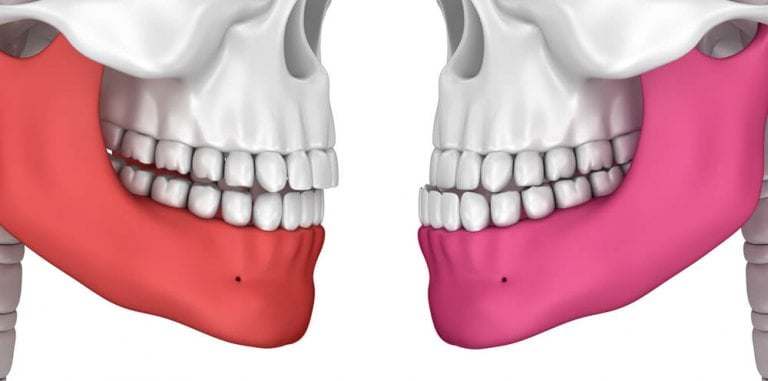Orthodontic treatment plays a vital role in improving dental health, functionality, and aesthetics for individuals of all ages.
From correcting misaligned teeth to addressing bite issues, orthodontic interventions offer numerous benefits that contribute to overall oral well-being. In this comprehensive guide, we will explore seven compelling reasons why orthodontic treatment is essential, highlighting its impact on dental health, confidence, and quality of life.
7 Reasons for Orthodontic Treatment
1. Correcting Misaligned Teeth
One of the primary reasons for orthodontic treatment is to correct misaligned teeth. Misalignment, also known as malocclusion, can manifest in various forms, including overcrowding, gaps between teeth, overbites, underbites, and crossbites. These issues not only affect the appearance of the smile but also impact dental function and oral health.
Orthodontic interventions such as braces and clear aligners are designed to gradually shift teeth into their proper positions, aligning the bite and improving overall dental alignment. By addressing misaligned teeth, orthodontic treatment enhances the aesthetics of the smile, promotes better oral hygiene, reduces the risk of dental problems like decay and gum disease, and improves chewing and speaking abilities.
SEE ALSO: What Is The Most Common Orthodontic Procedure?
2. Resolving Bite Irregularities
Orthodontic treatment is crucial for resolving bite irregularities, which occur when the upper and lower teeth do not fit together properly when biting or chewing. Common bite irregularities include:
Overbite: The upper front teeth overlap significantly with the lower front teeth.
Underbite: The lower front teeth protrude forward, overlapping the upper front teeth.
Crossbite: Some upper teeth sit inside the lower teeth when biting down.
Open Bite: There is a gap between the upper and lower front teeth when the back teeth are closed.
These bite irregularities can lead to issues such as jaw pain, difficulty chewing, speech problems, and increased risk of dental damage. Orthodontic treatment helps correct these irregularities, aligning the jaws and teeth for improved bite function, comfort, and oral health.
3. Enhancing Oral Health
Orthodontic treatment contributes significantly to overall oral health by addressing various dental issues that can impact oral hygiene and wellness. Misaligned teeth and bite irregularities can create challenges when brushing and flossing, leading to plaque buildup, tooth decay, and gum disease.
By straightening teeth and aligning the bite, orthodontic treatment makes it easier to maintain proper oral hygiene practices. Patients can effectively clean all tooth surfaces, reach tight spaces between teeth, and reduce the risk of cavities and gum inflammation. Improved oral health through orthodontic treatment also promotes healthier gums, stronger teeth, and a reduced likelihood of dental problems in the future.
4. Preventing Dental Complications
Orthodontic treatment plays a preventive role in avoiding potential dental complications that may arise from untreated misalignment and bite issues. Some of the dental complications that orthodontic treatment can help prevent include:
Tooth Decay: Misaligned teeth and crowded areas can trap food particles and bacteria, leading to increased risk of cavities and decay.
Gum Disease: Difficulty in cleaning between misaligned teeth can contribute to gum inflammation and periodontal disease.
Tooth Wear: Uneven bite forces can cause excessive wear on certain teeth, leading to premature wear and structural damage.
Temporomandibular Joint (TMJ) Disorders: Bite irregularities and jaw misalignment can strain the TMJ, resulting in pain, clicking, and dysfunction.
By addressing these issues through orthodontic treatment, patients can reduce their susceptibility to dental complications and maintain optimal oral health long-term.
5. Improving Speech and Chewing Function
Orthodontic treatment can significantly improve speech clarity and chewing function for individuals with misaligned teeth or bite irregularities. Malocclusion and jaw misalignment can impact the positioning of the tongue and affect speech sounds, leading to speech impediments or difficulties.
By aligning the teeth and jaws properly, orthodontic treatment helps correct these speech-related issues, allowing for clearer pronunciation, better articulation, and improved communication skills. Additionally, improved dental alignment enhances chewing function, making it easier to bite and chew food comfortably and effectively.
6. Boosting Self-Confidence and Well-Being
Beyond the physical benefits, orthodontic treatment can have a profound impact on an individual’s self-confidence and emotional well-being. Misaligned teeth, bite irregularities, and visible dental issues can cause self-consciousness and affect how a person feels about their smile and overall appearance.
Orthodontic interventions such as braces or clear aligners provide a path to a straighter, more aligned smile, boosting self-esteem and confidence. Aesthetic improvements from orthodontic treatment can enhance social interactions, professional opportunities, and overall quality of life, empowering individuals to smile with confidence and feel positive about their dental health.
7. Long-Term Dental Stability
Orthodontic treatment offers long-term dental stability by addressing underlying structural issues and promoting proper dental alignment. By correcting misalignments and bite irregularities, orthodontic interventions help distribute bite forces evenly across the teeth, reducing the risk of excessive wear, tooth fractures, and jaw strain.
Furthermore, orthodontic treatment contributes to the longevity of dental restorations such as crowns, bridges, and implants. Properly aligned teeth provide a stable foundation for these restorations, ensuring optimal function, durability, and aesthetics over time. Investing in orthodontic treatment can thus lead to a healthier, more stable dental structure for years to come.
Conclusion
Orthodontic treatment offers a wide range of benefits that extend beyond cosmetic improvements to encompass enhanced oral health, functionality, and overall well-being. From correcting misaligned teeth and bite irregularities to improving speech, chewing function, and self-confidence, orthodontic interventions play a crucial role in optimizing dental health and quality of life for individuals of all ages.
By understanding the seven key reasons for orthodontic treatment outlined in this guide, patients can make informed decisions about pursuing orthodontic care to address their unique dental needs and achieve long-lasting dental stability, oral health, and satisfaction with their smile. Orthodontic treatment is not just about straightening teeth—it’s about transforming smiles and enhancing lives through comprehensive dental care.

